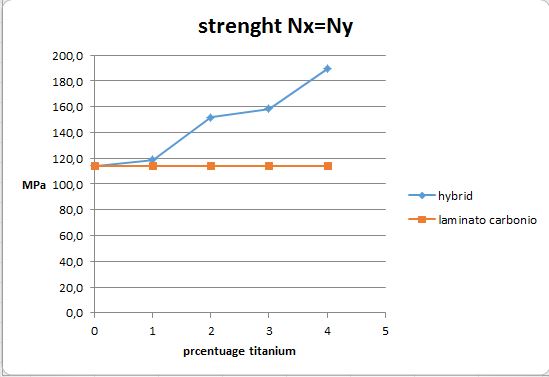hello guys, i have a problem with the simulation software simulation composite design … I was given a comparison between a laminate (0,90 plus-minus 45) twice symmetrical and analyze what happens if I go from center to replace two by two with laminates of titanio.in practice to make a comparison between a laminate made of carbon and a hybrid coatings made with increasing percentage of titanium. all this analyzing different loads: Nx = Ny, Mx = My.I results I got were that Nx = Ny resistance is always to increase as increases the percentage of carbon is possible ?? another problem is that when I go analyze Mx = My’m resistance values very tiny is this possible? thanks !![ATTACH][ATTACH][ATTACH] [/ATTACH][/ATTACH][/ATTACH]
[/ATTACH][/ATTACH][/ATTACH]
I don’t know if I’m reading you problem correctly or not, but I think you are asking why the in-plane strength goes up so significantly when you replace the inner layers with titanium and why the bending strength does not increase much at all. Is this correct?
If so, I believe the reason for the marked increase in in-plane strength (Nx = Ny) is due to the isotropic nature of the titanium and its high strength. You are replacing both 0 and 90 degree plies of carbon with the titanium which (I am assuming) are at least comparable in strength to the 0 degree strength of the carbon plies. Assuming this, the titanium will have a much higher strength compared to the transverse strength of the plies (90 degree). Replacing two 0 and 90 degree plies each with the titanium then must be the reason for the marked increase.
For the flexural strength, this is mainly due to the replacement of the carbon plies at the center (neutral axis) of the laminate, which has the least effect on the flexural properties of the laminate, especially if the titanium layers are the same thickness as the replaced carbon plies. A much greater effect will be seen if plies near the laminate surfaces are replaced by the titanium.
